Forced ventilation: options
For what is organized not only the hood, but also the flow of air? What could be the ventilation in a private house or apartment? What additional functions can it perform?
In our material we will try to give answers to these and some other questions.
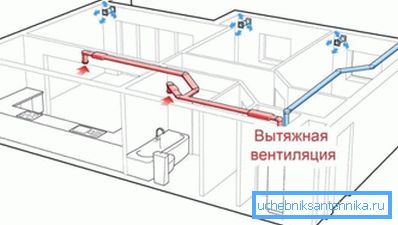
Why do you need it
How does ventilation work in a typical apartment building? Air is driven by a difference in density between warm and cold air masses. Warm air is forced out into the upper part of the room and from there into the receiving grid of the duct; the ventilation channel removes it outside the house.
Obviously, fresh air should take the place of the air removed from the apartment.
Where does he come from?
- From windows and air vents when airing the room. Airing a house or apartment is recommended at least twice a day.
- All the rest of the time, the air flow is carried out only due to the leakage of doors and windows - through the gaps between the door leaf, frames and boxes of openings.
Note: the air flow from the stairs in an apartment building rarely carries pleasant odors. Entrance doors try to make as tight as possible; Large-slit wooden window frames are also rapidly being replaced by metal-plastic.
Natural ventilation is generally inconvenient because it depends too much on external factors. Strong wind on the street dramatically increases air circulation; in summer, when the delta of temperature between the street and the room is minimal, it tends to zero.
Installation of various exhaust fans - half measure. If there is air flow, but there is no inflow - obviously, after some time the fans will start to idle. In addition, exhaust ventilation in a city apartment is usually supplied only with a kitchen and a bathroom; The composition of the atmosphere in the living room leaves much to be desired.
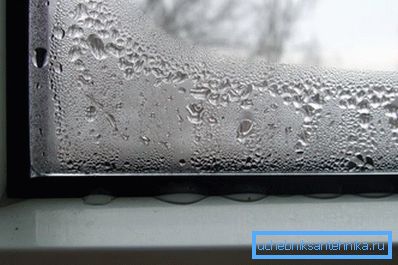
The intake ventilation system completely solves all the problems described. It delivers air where it is needed and in the required quantity.
Simple solutions
Two devices are used as the simplest and most accessible solutions:
- The window valve is mounted in the upper part of the window opening and provides a constant measured air flow.
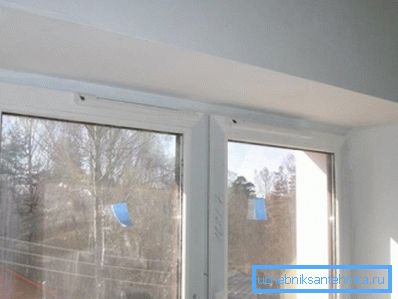
- An alternative is to install a fresh air blower that pumps fresh air through a hole in the outer wall.
In theory, they provide a constant renewal of the atmosphere throughout the entire volume of the dwelling. In practice, everything is somewhat sadder.
Recall: for most of the territory of Russia is characterized by severe winters.
Air flow with a temperature of -20 - -40 degrees generates a number of rather unpleasant problems:
- Draft in general is not as good for health. The situation is exacerbated by the presence of children, which is icy air, cutting through the floor, is absolutely contraindicated.
- A sharp temperature drop is detrimental to wallpaper. The rapid cooling of the wall leads to the fact that they are peeled off in whole layers.
- Periodic cycles of cooling and heating do not benefit the furniture and parquet. After a short time, they begin to crack, to deform.
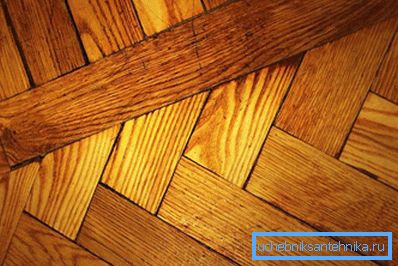
Obviously, this option is not the best.
Supply unit
The so-called compact candy bar, which is responsible for the preparation of fresh air. Its main functions are the correction of the flow temperature (heating or, more rarely, its cooling) and, if necessary, filtering. However, as we shall see later, this functionality of devices is not exhausted.
What are the air handling unit (PU)?
Customized
A typical individual ventilation intake system has a capacity of up to 100 m3 / h and provides one room with fresh air. Compactness allows you to install PU on the balcony, under the window on the outer surface of the wall, and even indoors.
Installation can be done by hand, takes no more than a couple of hours and does not require expensive tools: in fact, you only need to make a hole in the outer wall under the duct.
Let's examine the iFresh compact PU from Lufberg as a sample.
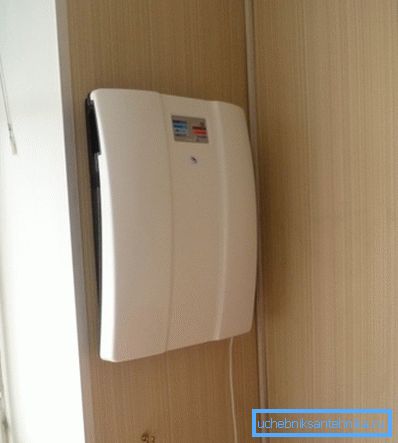
| Parameter | Value |
| Performance | Three modes: night 40 m3 / hour, day 80 m3 / hour, asset 120 m3 / hour |
| Fan power | 22/26/40 W depending on the selected mode |
| Heat | Low-temperature ceramic heater with a two-stage regulator, power - 370/800 W |
| Noise level | 21/27/39 dB, depending on the selected mode |
| Filtration | Mechanical anti-dust filter class F7, activated carbon filter for odor removal |
| Additional functions | Heater mode, remote control |
| Weight | 7.5 kg |
| Price | 24,900 rubles |
It is worth paying attention to the fact that the least productive mode of forced ventilation makes the unit almost silent. The noise of 21 dB corresponds to the whisper volume at a distance of a couple of meters.
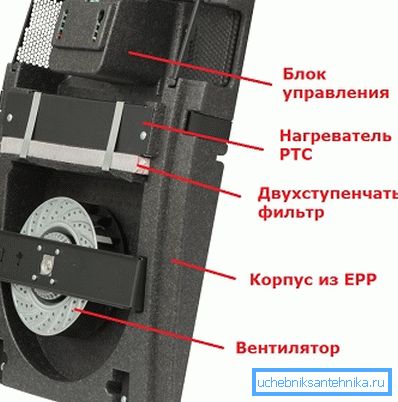
Useful: the function of an individual PU can be performed by an air conditioner with fresh air ventilation, equipped with a duct between the internal and external units. However, these devices remain operable at a temperature not lower than -15 - -25C.
Ducts
These devices are designed to supply prepared air to the duct and then distribute it to several rooms. Productivity PU for cottages can reach 2000 - 3000 m3 / hour; productivity of industrial units - hundreds of thousands of cubic meters. The cost of younger models starts from 70,000 rubles.
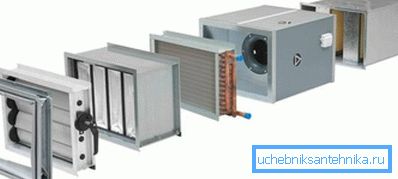
Obviously, the buyer will face a couple of problems:
- The unit has a fairly solid dimensions and weight of 40-50 kilograms. To hide her in an apartment is not so easy.
- In addition, it, by definition, requires wiring ducts in all rooms.
Despite these features, channel PUs are very popular with owners of country houses in cold regions.
What parameters should I look for when choosing a device?
Performance and static pressure
The minimum static instrument pressure for a large apartment or cottage of medium size is 400-500 Pa. Note: a substantial part of it will be spent on overcoming the aerodynamic drag of air ducts; with their considerable length it is better to have a stock.
Capacity is selected according to the air exchange norms set forth in SNiP 41-01-2003. For one person who is always in the living room, the document indicates the rate of 3 m3 / hour per square meter.

However, for large rooms in which a small number of people live, this value is clearly redundant and will lead to excessive heating and air conditioning costs.
When choosing a PU, you can safely rely on the following table:
| Area of the room, m2 | Performance of ventilation, m3 / h |
| thirty | 200 |
| 50 | 300 |
| 80 | 400 |
| 130 | 500 |
Noise level
Instructions for selecting this parameter are pretty obvious: the less noise - the better.
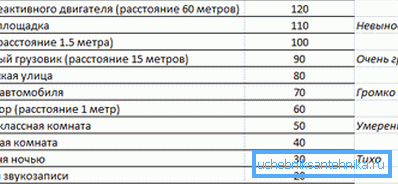
However, there are a couple of subtleties.
- When you install the unit outside the room and its configuration noise absorber the difference between high and low noise, you do not feel.
- Some manufacturers specify acoustic power (LwA) for their products, and some indicate sound pressure level (LpA). These parameters for one device are noticeably different. If we really compare - then the same characteristic.
Filtration
The fresh air filter can be coarse (filter class G4) or fine (F7). In the first case, it will only delay the sand carried by the wind and poplar fluff; in the second you can forget about rubbing dust in the room for a long time.
However: for obvious reasons, the filter will need much more frequent cleaning and replacement.
The optional carbon filter is useful if you live close to a steel plant or a pig farm. It negates odor impurities.
Cooling
Freon cooler for fresh air ventilation (or, more simply, channel air conditioning) allows you to turn it into a complete climate system.

How much is such a scheme advantageous against the background of several air conditioners, separated by rooms?
- Duct air conditioner is easy to hide along with the duct system. Separate split systems will remain visible. In addition, in this case, you will need only one external unit; several split systems will uniformly decorate your facade with heat exchangers.
- Climate control can be carried out from a single remote control, which is very convenient in a large house.
However, it is worth bringing a couple of counter-arguments.
- Individual devices are able to provide more flexible temperature conditions. The fresh air ventilation controller can only limit the flow of cold air when it reaches the threshold set for a specific room. At the same time, for different split-systems it is possible to separately set the modes of heating, dehumidification and cooling.
- In the split system, due to the shorter length of the lines, less heat is dissipated uselessly. As a result, they are on average somewhat more economical.
Recovery
The presence of a heat exchanger that warms or cools the supply air due to the exhaust duct is a definite plus. The recuperator can reduce heating costs by 15-20%. The heat transfer efficiency in the best models reaches 85%.
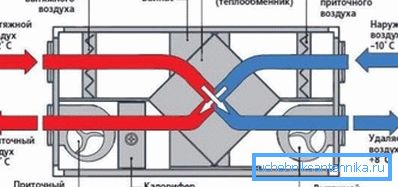
Conclusion
We hope that the material offered to the reader’s attention will help him in choosing the optimal device for his purposes.
For more information on what ventilation is and how it works, see the video in this article. Successes!